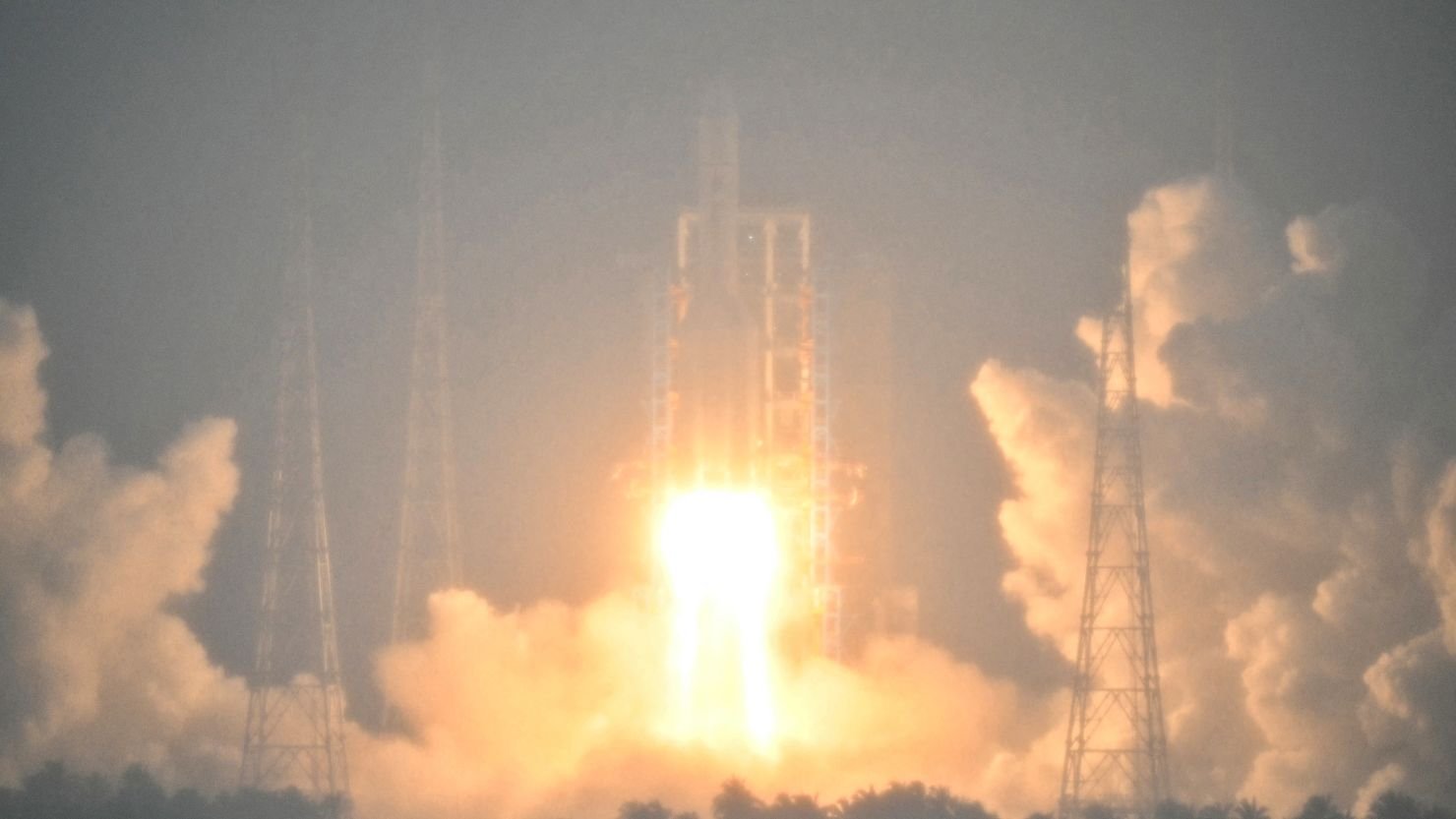The ambitious Chang’e-6 mission commenced on Friday, marked by the spectacular lift-off of a 57-meter-tall Long March 5 rocket from the Wenchang Satellite Launch Center at 5:30 a.m
China has embarked on a pioneering mission, aiming to retrieve the first-ever samples from the far side of the moon. The complex and ambitious Chang’e-6 mission commenced on Friday, marked by the spectacular lift-off of a 57-meter-tall Long March 5 rocket from the Wenchang Satellite Launch Center at 5:30 a.m. Eastern (0930 UTC) on May 3. Carried aloft was the approximately 8,200-kilogram Chang’e-6 spacecraft, poised to undertake a groundbreaking journey into the lunar unknown.
The mission’s success hinges on a meticulously orchestrated series of maneuvers. A first-second stage burn was executed 12 minutes post-launch, followed by a translunar injection burn approximately 14 minutes later. Critical spacecraft separation is scheduled around 37 minutes into flight. Should these maneuvers proceed as planned, the ensuing 53-day-long mission promises to revolutionize our comprehension of both Earth and the moon, along with shedding light on the early solar system’s history.
Chang’e-6 is no ordinary mission; it comprises a stack of four specialized spacecraft, each tasked with distinct roles. The orbiter spearheads the mission into lunar orbit, paving the way for a meticulously planned descent.
A lander, upon separation, will target a precise landing site within the Apollo crater on the moon’s far side. Navigating the communication blackout imposed by Earth’s interference, a dedicated communications relay satellite, Queqiao-2, launched in March, facilitates crucial communication between the ground and the lunar far side.
Upon touchdown, the lander will deploy its instruments, including a drill capable of extracting lunar samples up to two meters below the surface, alongside a scoop. These invaluable samples, weighing up to 2,000 grams, will be loaded into an ascent vehicle for transport back to lunar orbit. There, a challenging rendezvous and docking operation with the orbiter await, culminating in the transfer of samples to a reentry capsule.
The journey back to Earth is equally perilous; the reentry capsule, released just prior to Earth’s atmosphere, undergoes a sequence of maneuvers, including a skip off the atmosphere’s edge to reduce velocity, before its fiery plunge concludes with a landing in Inner Mongolia.
Chang’e-6 represents a repurposed backup to the successful 2020 Chang’e-5 mission, which retrieved samples from the moon’s near side. Leveraging on the groundwork laid by the Chang’e-4 mission, which touched down on the lunar far side in 2019, Chang’e-6 aims to unlock the mysteries buried within the South Pole-Aitken (SPA) basin, a colossal impact basin on the moon’s far side.
Contrary to popular belief, the far side of the moon isn’t perpetually shrouded in darkness; it harbors secrets waiting to be unearthed. The samples retrieved by Chang’e-6 hold the key to unraveling a myriad of lunar mysteries, offering insights into Earth’s own history.
Mare basalts, originating from the lunar mantle, promise crucial revelations, particularly regarding the lunar dichotomy—the stark contrast between the near and far sides. Additionally, excavated lunar mantle materials within the SPA Basin present an unprecedented opportunity to study the lunar magma ocean model.
Chang’e-6 isn’t merely a solo endeavor; it symbolizes China’s commitment to international collaboration in space exploration. Alongside its primary objective of sample collection, the mission hosts a suite of international scientific payloads from France, Sweden, Italy, and Pakistan. These collaborative efforts underscore China’s ambition to foster global partnerships in its quest for scientific discovery.
Looking ahead, Chang’e-6 represents a stepping stone towards China’s broader lunar aspirations. Subsequent missions, such as Chang’e-7 in 2026 and Chang’e-8 around 2028, will target the moon’s south pole, paving the way for eventual human exploration. These missions are integral to China’s vision of establishing a permanent lunar base under the International Lunar Research Station (ILRS) program by the 2030s, a collaborative initiative supported by numerous nations and organizations.
Moreover, Chang’e-6 serves as a testing ground for future endeavors, including Mars sample return missions slated for the 2030s. As China continues to push the boundaries of space exploration, Chang’e-6 stands as a testament to human ingenuity and the relentless pursuit of scientific advancement.
